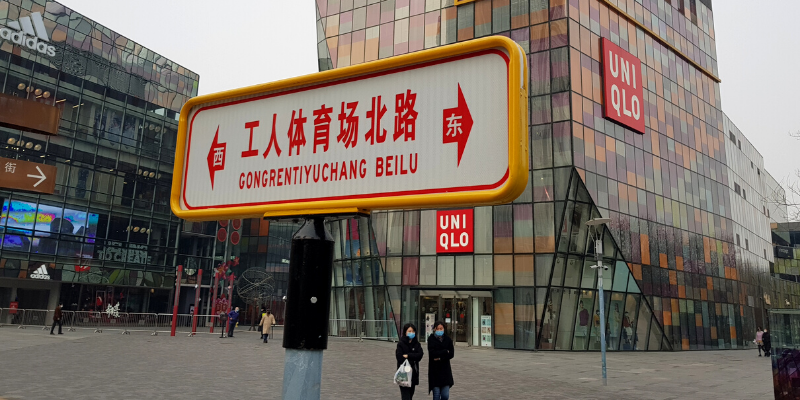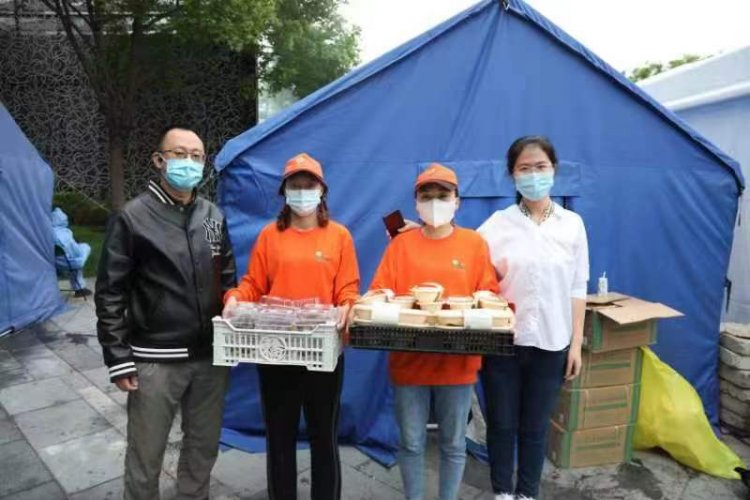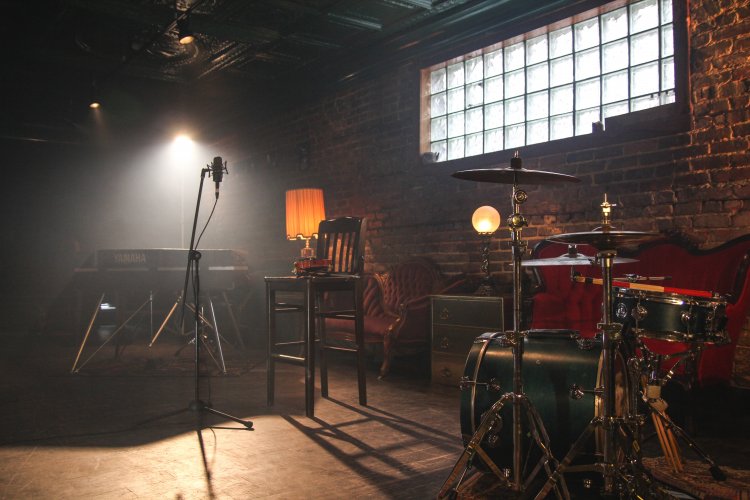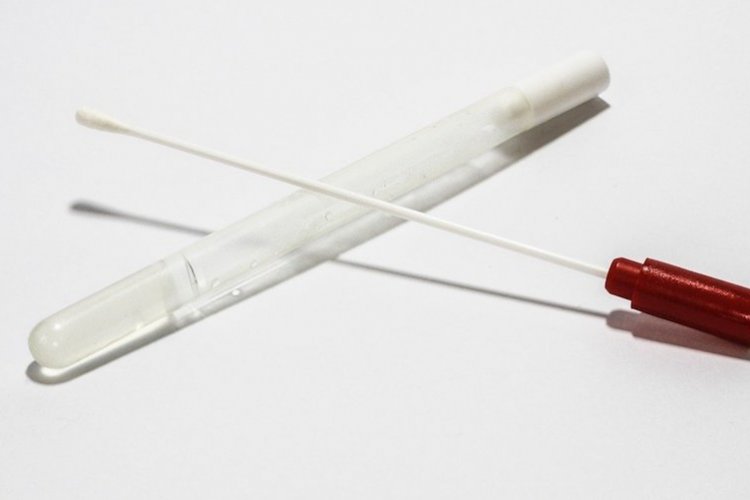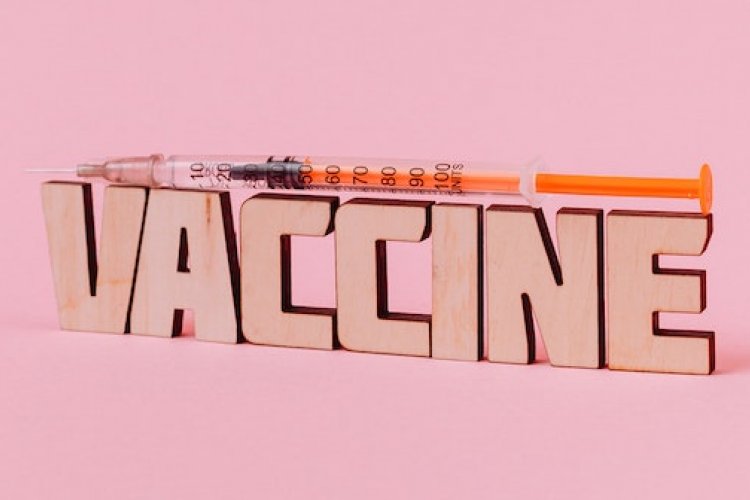Exploring the Ghost Town That is Beijing's Retail Mecca Sanlitun
There are some upsides to the coronavirus epidemic. For example, it is now possible to cross the intersection of Gongrentiyuchang Beilu and Sanlitun Nanlu/Beilu without fear of being flattened by a 19-year-old in a Peppa Pig-decalled Lamborghini or a sleep-deprived delivery driver. In fact, it's not even necessary to look both ways or even wait for a green light before crossing – the normally frantically busy intersection is now so quiet that you've got a better chance of successfully returning an item on Taobao than getting into a traffic accident.

Sanlitun, usually one of Beijing's busiest retail areas, has become a ghost town.
Sanlitun Soho

The ground floor of Sanlitun Soho, usually a busy plaza filled with the scrape and clack of skateboarders and hurried kuaidi drivers is empty. No water flows through the artificial stream, and Chinese New Year decorations, which never expected to be on duty for so long, show serious signs of wear. This is not the Year of the Rat that anybody wanted. Almost every shopfront in the basement level is closed, locked fast with heavy deadlocks that are rapidly becoming a symbol for the state of retail in China. A lone waimai guy stood waiting outside the closed-looking "Foodie Court," only for a masked man with a furtive look to thrust a bag of food out of a crack in the door. So is anything actually open for business? Yes. Subway, and Relx. Vapers gonna vape.
Click here for citywide bar and restaurant opening hours updates.
Topwin Center
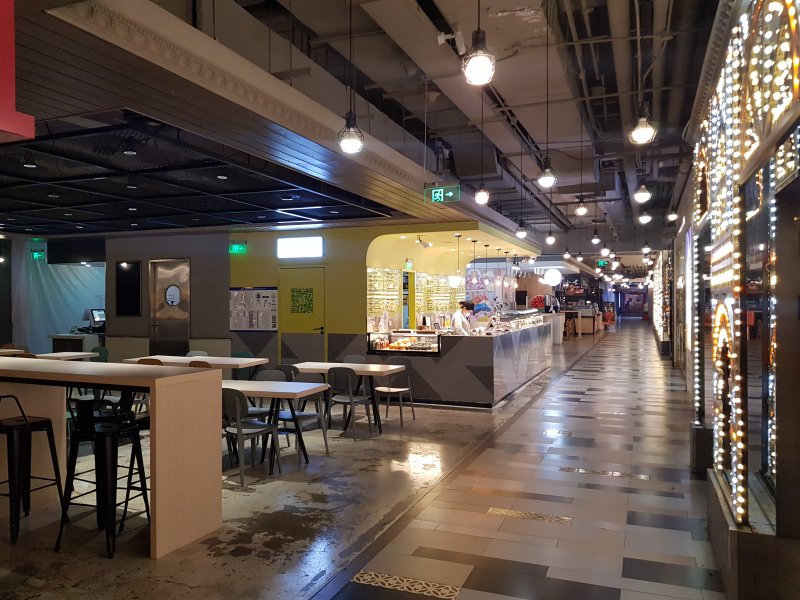
Over at Topwin, the usual mandatory temperature check takes a turn with the guard informing me he'll have to look into my ears. This is new. As he data-mines my eardrums, I dutifully scribble my name, passport number, and the only truly important piece of information here in China: my cell phone number.
Midday Wednesday, when the basement foodcourts would normally be thronged with crowds, just a few vendors are open, servers disconsolately pushing sanitizing wipes around the already pristine surfaces. Diners, take note: Avocado Tree, Shubo, Wawa, Takoyaki Kinpatei Japanese Restaurant, and Yum!!ricee are all open for business, for now.
Courtyard 4

With the Sanlitun Nanlu entrance barricaded off, ghetto style, I detour around to enter Courtyard 4 via the north entrance, again dutifully surrendering all my personal data and walking through a small crowd of people. A welcoming committee, perhaps? Nope, just people waiting for their parcel deliveries. Entering is scarcely worth the effort, with almost every single storefront closed, with the notable exceptions of Q Mex, The Local (from 4pm onwards), and Seesaw Coffee. Who could have foreseen that the untimely demise of The Bookworm might have been quite timely, after all.
Taikoo Li

The place where Beijing's capitalists go to worship, Taikoo Li plaza, is open for business as normal. At least that seems to be what building management has decreed, as in contrast to other compounds, almost every single store on the ground floor is open, lit up, and staffed, customers or no customers. Is it because the storefronts are highly visible from street level? Or because the majority of brands represented here – Uniqlo, Adidas, H&M, Victoria's Secret, Starbucks, etc. – are foreign-owned? At least security staff are enjoying high employment rates. Over at the Apple Store, the Genius Bar seems to have far more geniuses on the clock than is strictly necessary, so if you've been putting off a repair job for a while, now's the time.
Nali Patio

Finally, some signs of life. Over at otherwise-dead Nali Patio, Moka Bros is humming. Although, once the lunchtime crowd has departed (each order supplemented by a temperature reading wrist scan, at the till) it looks more like a coworking space than usual, with almost every occupied table decorated with a laptop, and a remote-working drone, including me. Click-clack go the keyboards, thump-thump goes the music.
The terrible eruption of the Mount Tambora volcano in Indonesia in 1815 indirectly led to the creation of two of the greatest horror stories of the 19th century – Frankenstein and Dracula. Perhaps historians will look back at the great Chinese creative explosion of 2021 and attribute it to the forced confinement of the current coronavirus epidemic. Only time will tell.
READ: Dongcheng, Xicheng Show Signs of Coming Back to Life
Photos: Anna Pellegrin Hartley

